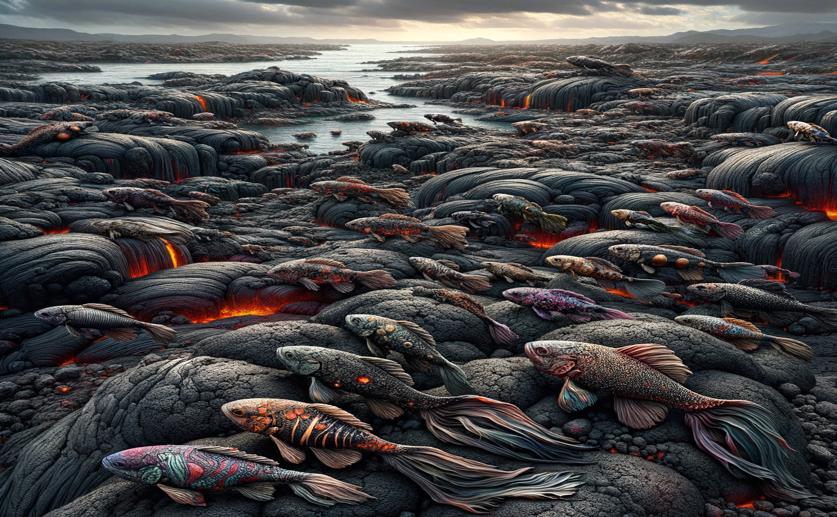
Diverse Traits in Tiny Fish Groups Living in Lava Landscapes
Greg Howard
16th April, 2024

Image Source: Natural Science News, 2024
Key Findings
- Study in Iceland shows small Arctic charr populations adapt in isolated lava caves
- Despite limited gene flow, these fish exhibit diverse physical traits, suggesting adaptive evolution
- Environmental factors like cave temperature and size only partly explain the fish's physical variations
References
Main Study
1) Fine scale diversity in the lava: genetic and phenotypic diversity in small populations of Arctic charr Salvelinus alpinus
Published 15th April, 2024
https://doi.org/10.1186/s12862-024-02232-3
Related Studies
2) Climate change, adaptation, and phenotypic plasticity: the problem and the evidence.
3) CORRELATION OF PAIRWISE GENETIC AND GEOGRAPHIC DISTANCE MEASURES: INFERRING THE RELATIVE INFLUENCES OF GENE FLOW AND DRIFT ON THE DISTRIBUTION OF GENETIC VARIABILITY.
4) Historical fragmentation of islands and genetic drift in populations of Galápagos lava lizards (Microlophus albemarlensis complex).
5) The consequences of phenotypic plasticity for ecological speciation.



 11th April, 2024 | Greg Howard
11th April, 2024 | Greg Howard